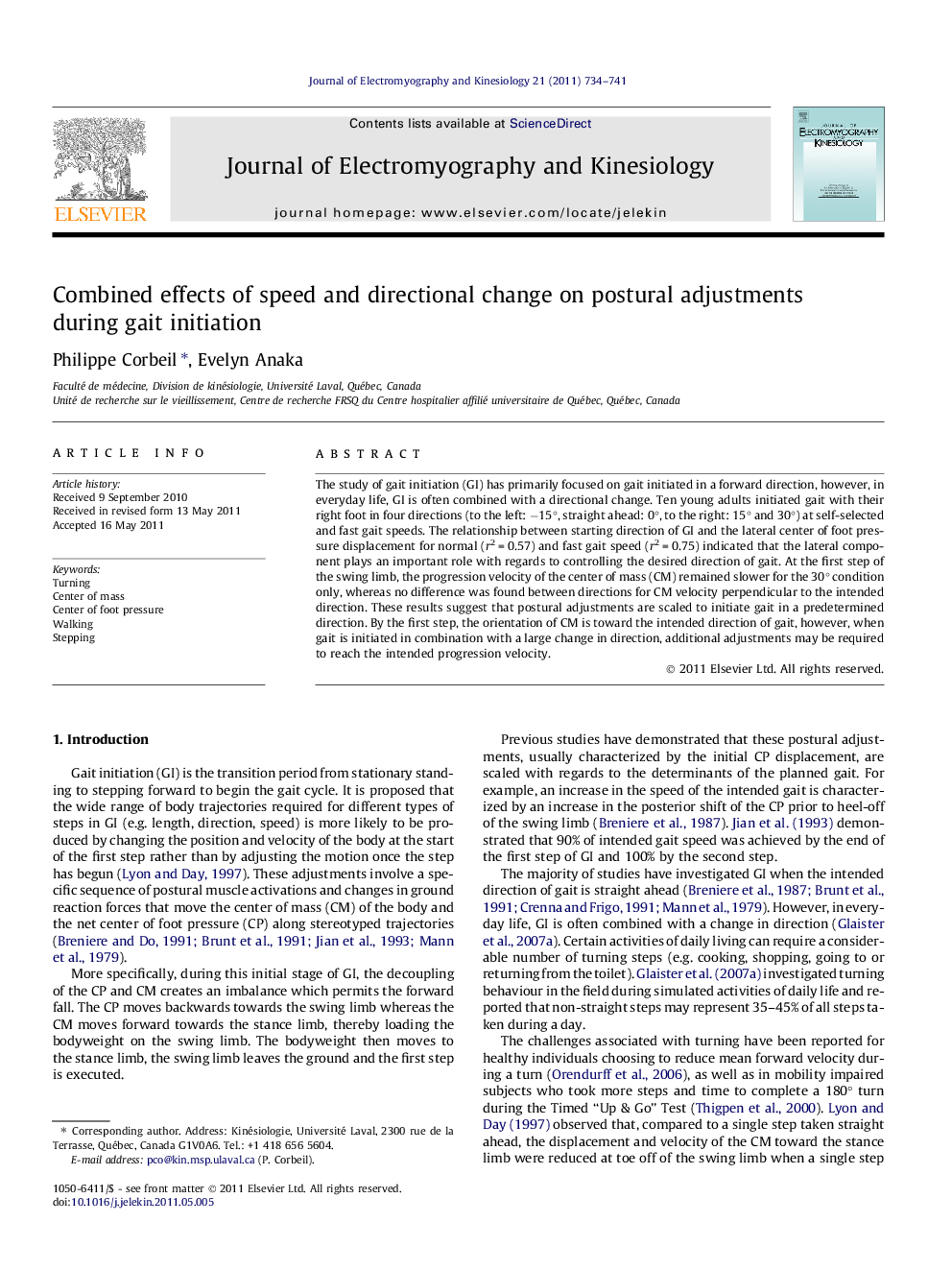| Article ID | Journal | Published Year | Pages | File Type |
|---|---|---|---|---|
| 4065066 | Journal of Electromyography and Kinesiology | 2011 | 8 Pages |
The study of gait initiation (GI) has primarily focused on gait initiated in a forward direction, however, in everyday life, GI is often combined with a directional change. Ten young adults initiated gait with their right foot in four directions (to the left: −15°, straight ahead: 0°, to the right: 15° and 30°) at self-selected and fast gait speeds. The relationship between starting direction of GI and the lateral center of foot pressure displacement for normal (r2 = 0.57) and fast gait speed (r2 = 0.75) indicated that the lateral component plays an important role with regards to controlling the desired direction of gait. At the first step of the swing limb, the progression velocity of the center of mass (CM) remained slower for the 30° condition only, whereas no difference was found between directions for CM velocity perpendicular to the intended direction. These results suggest that postural adjustments are scaled to initiate gait in a predetermined direction. By the first step, the orientation of CM is toward the intended direction of gait, however, when gait is initiated in combination with a large change in direction, additional adjustments may be required to reach the intended progression velocity.
